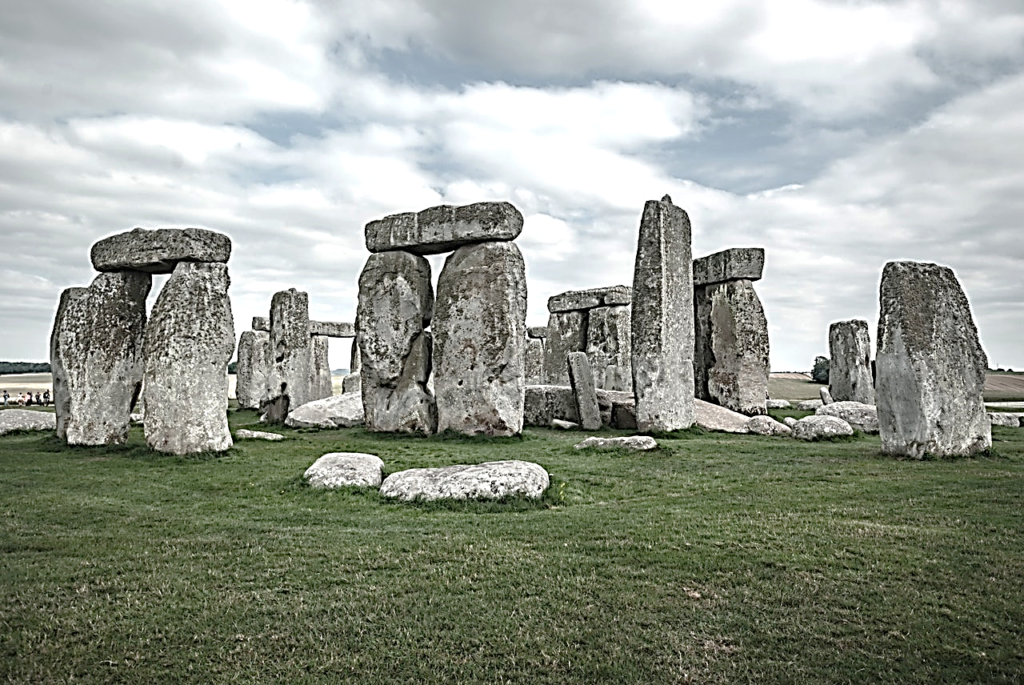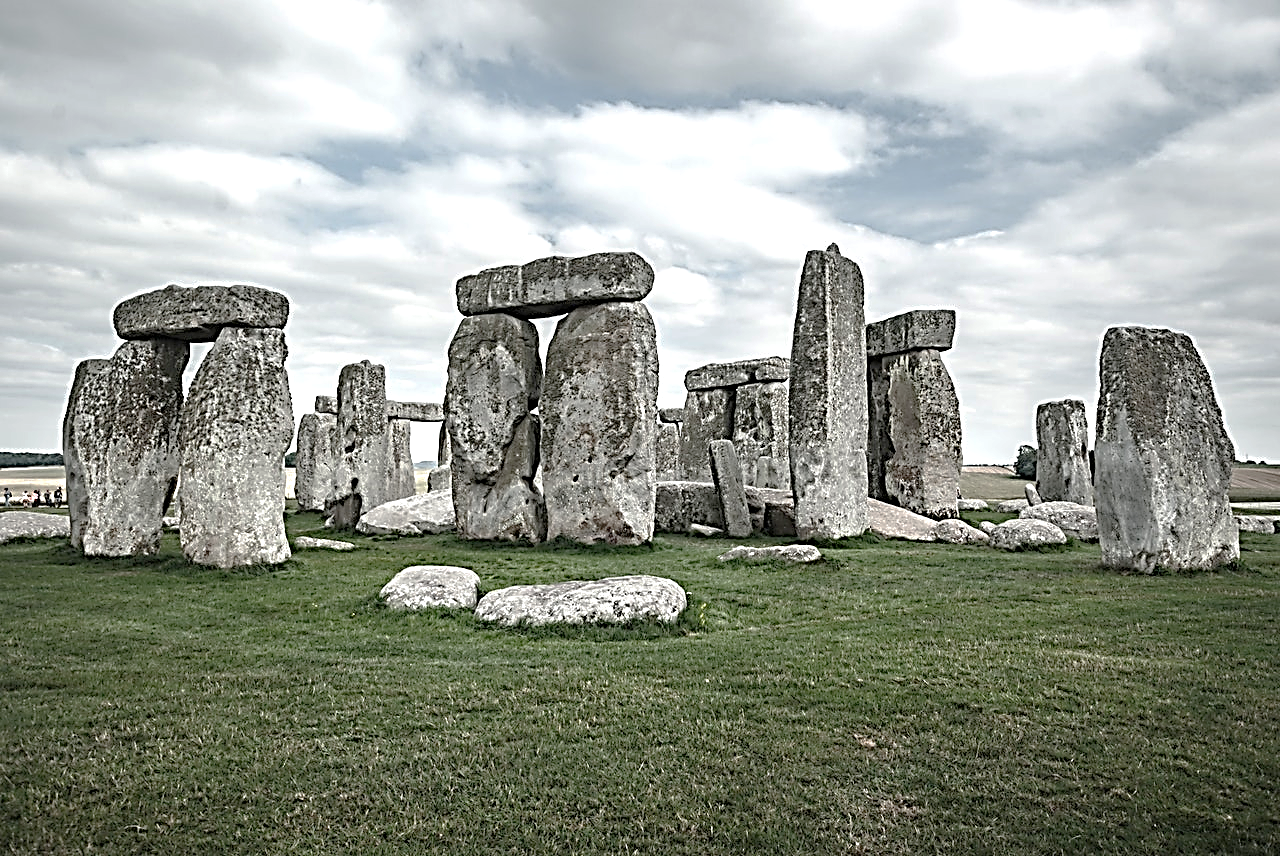
I learned this today. The different rocks of Stonehenge came from three different places.
Stonehenge was probably built between 3000 and 2000 BC. Originally, it was constructed with wood. Wooden posts dating from 8000 BC have been found there, suggesting that it has been a place of significance for a long time. The first Stonehenge consisted of wooden posts in a circular ditch, in about 3100 BC. In about 2900 BC, a timber structure was built on the location. In 2600 BC, wood gave way to stone and the first standing stones were erected. Construction continued off and on until about 1600 BC.
Stonehenge has an outer ring of standing stones about 4m high, weighing about 25 tons each. There are horizontal lintel stones on top of these standing stones. Inside this ring is a horseshoe of sarsen stones, weighing up to 50 tons. There are lintels on these stones as well. The stones are aligned with the sunset of the winter solstice and the sunrise of the summer solstice. The purpose of Stonehenge is unknown.
There are three main types of stones used in Stonehenge and they all came from
different places.
Nobody knew where the smaller stones, known as bluestones, came from for so long. However, recently, experts believe they have worked out where they came from. Robert Ixer and Richard Bevins have been searching for the source for years. They have finally managed to track it down to two megalithic quarries in the Preseli Hills in Wales. Craig Rhos-y-felin and Carn Goedog. The stone is an identical match with the bluestones in Stonehenge. These places are about 241km away from the location of Stonehenge! It took a long time to track down the location of the stones and many experts believed that they could have been pushed close to Stonehenge by glaciers. This is now thought to be extremely unlikely. The stone in the quarries has formed in blocks that lend themselves to carving. It could have been fairly “simple” for people using basic tools to chisel them off cleanly.
How they were brought to Stonehenge is still a mystery. There are many theories, but people at that time didn’t have written records, so there is no way of really knowing. The main theories are that they were brought by boat or that they were dragged over land. There is no real proof for either theory, but over land seems most likely. However, how they came that far is maybe not as important a question as why. Each bluestone weighs about 5 tons, and we can assume that they were probably shaped when they were on site, so they would have been even heavier when they were moved. Most megalithic monuments use stone from areas no farther than about 15km away. To use rock from nearly 250 km away means that there must be something very special about that rock and that place. Unfortunately, we don’t know what that is.
The bluestones may not all have come directly to Stonehenge. Stonehenge was built over hundreds of years and some of these stones were in different stone circles near to Stonehenge and by the quarries themselves.
The second type of rock is the altar stone, which is a type of sandstone that probably came from south-east Wales. It is a stone that is lying down and was given the name “altar stone” in the early 17th century. It looks like an altar, but there is no evidence that that is what it was. If that is truly where it came from, then that is a journey of 150 km. Why people went to such great lengths to move incredibly heavy stones so far from particular areas is probably something that we will never know.
The last type of rock is the sarsen rocks, the tall standing stones. These are pure silica, which makes finding their source incredibly difficult. Silica is pretty much identical, no matter where it comes from. However, in 2018, geologists were able to use a technology called X-ray fluorescence to analyze the rock. That, along with geochemical analysis, allowed them to make a geological fingerprint of the rock. The only possible match for this rock fingerprint was in West Woods on the edge of the Marlborough Downs. This is a distance of almost 30 km and some of these weigh over 35 tons. How they brought them, how they managed to stand them up and, moreover, why they did it is maybe something that we will never know.
So, the bluestones were brought from a quarry in Wales over 250 km away. The sandstone altar stone came from about 150 km away and the huge sarsens came from 30 km away. I would love to be able to go back and see what it was all for and how they used it. It may well be that its use changed with time. And this is what I learned today.
Photo by Samuel Wölfl from Pexels
Sources:
https://www.historyextra.com/period/prehistoric/secrets-stonehenge-where-how-built-theories/
https://en.wikipedia.org/wiki/Stonehenge
https://en.wikipedia.org/wiki/Inigo_Jones
https://www.english-heritage.org.uk/visit/places/stonehenge/history-and-stories/building-stonehenge/
https://www.bbc.com/news/uk-wales-57639510
https://news.sky.com/story/stonehenge-stones-moved-by-land-not-sea-new-study-suggests-11642196
https://www.history.com/topics/british-history/stonehenge

